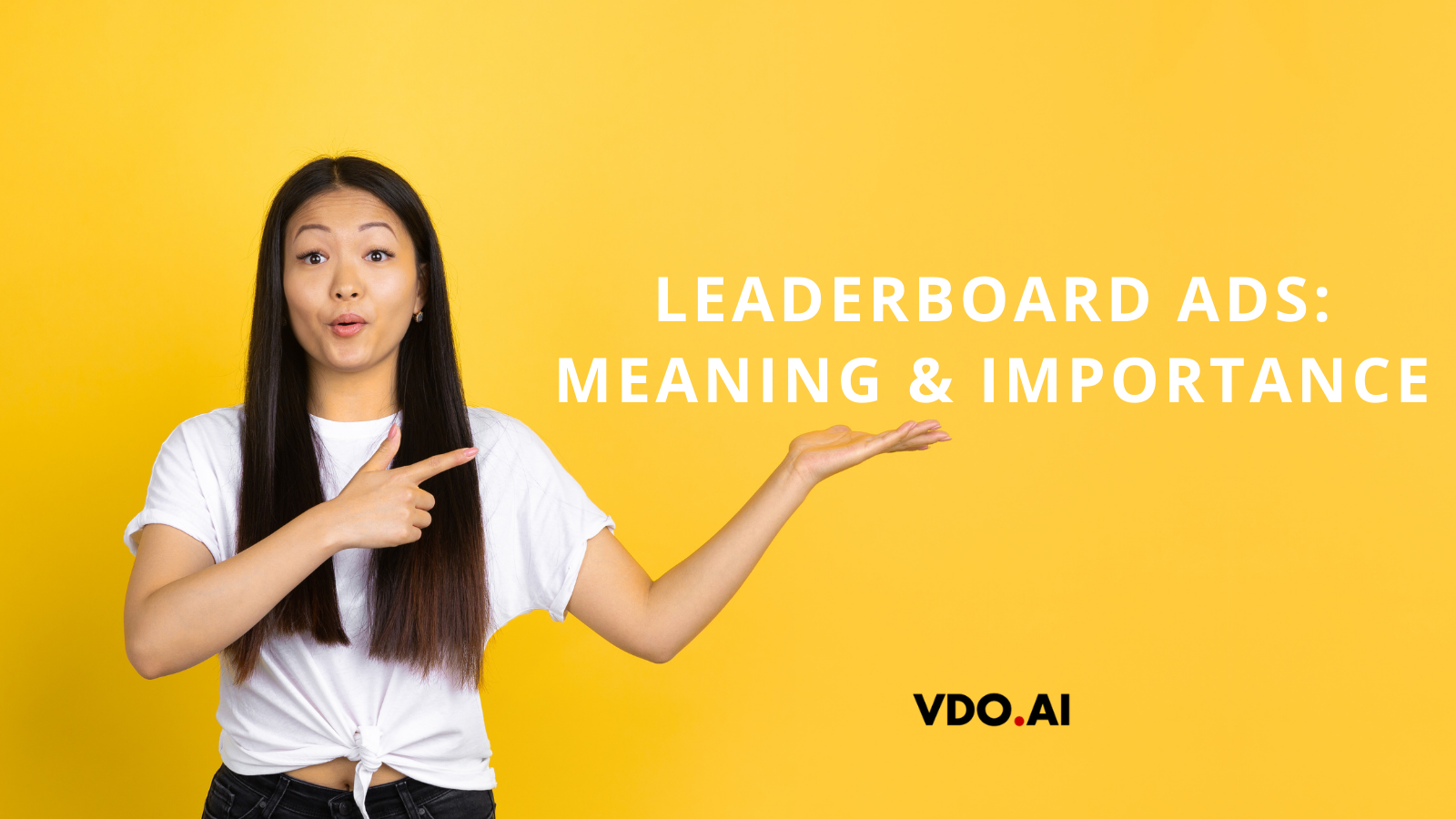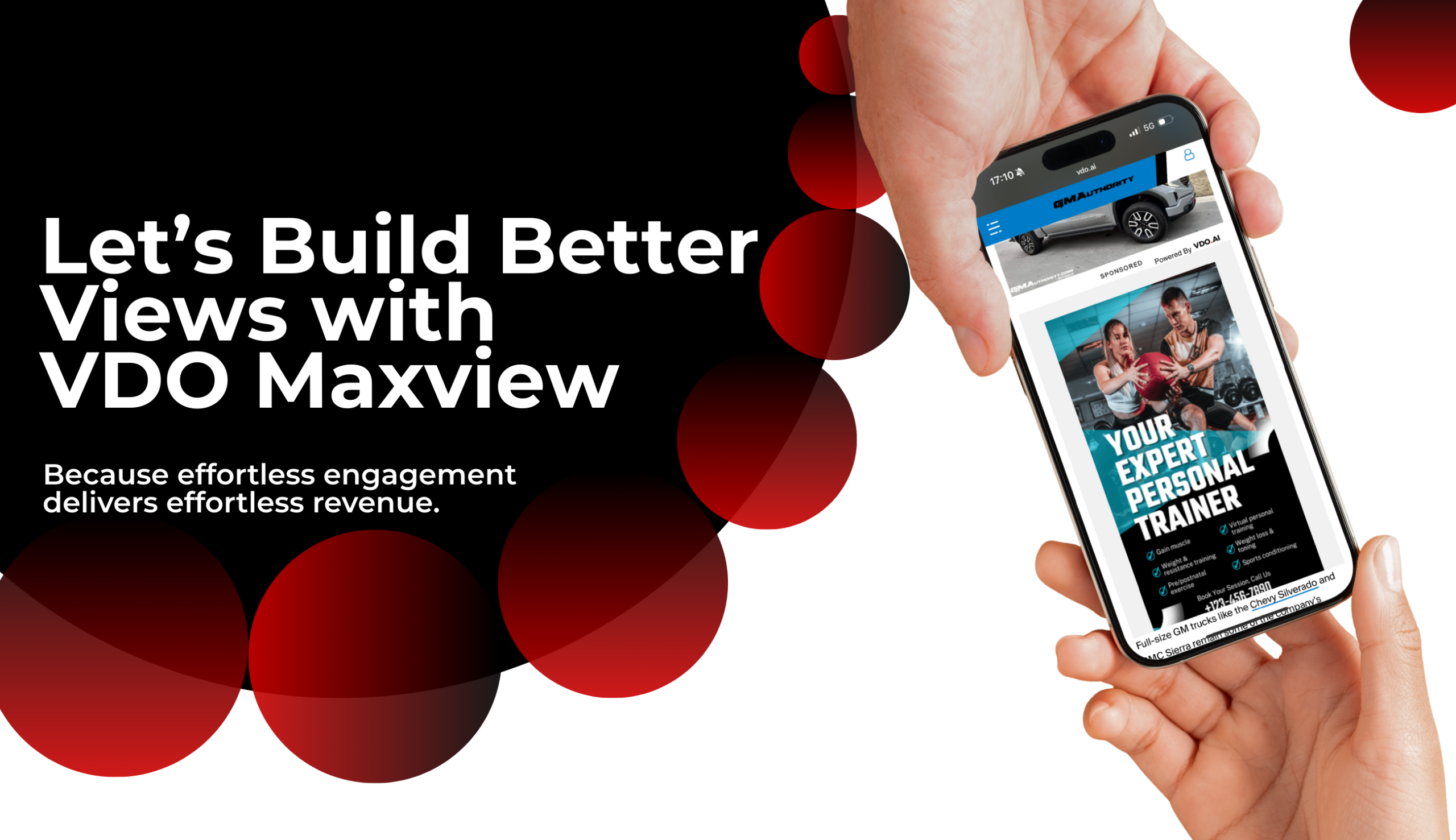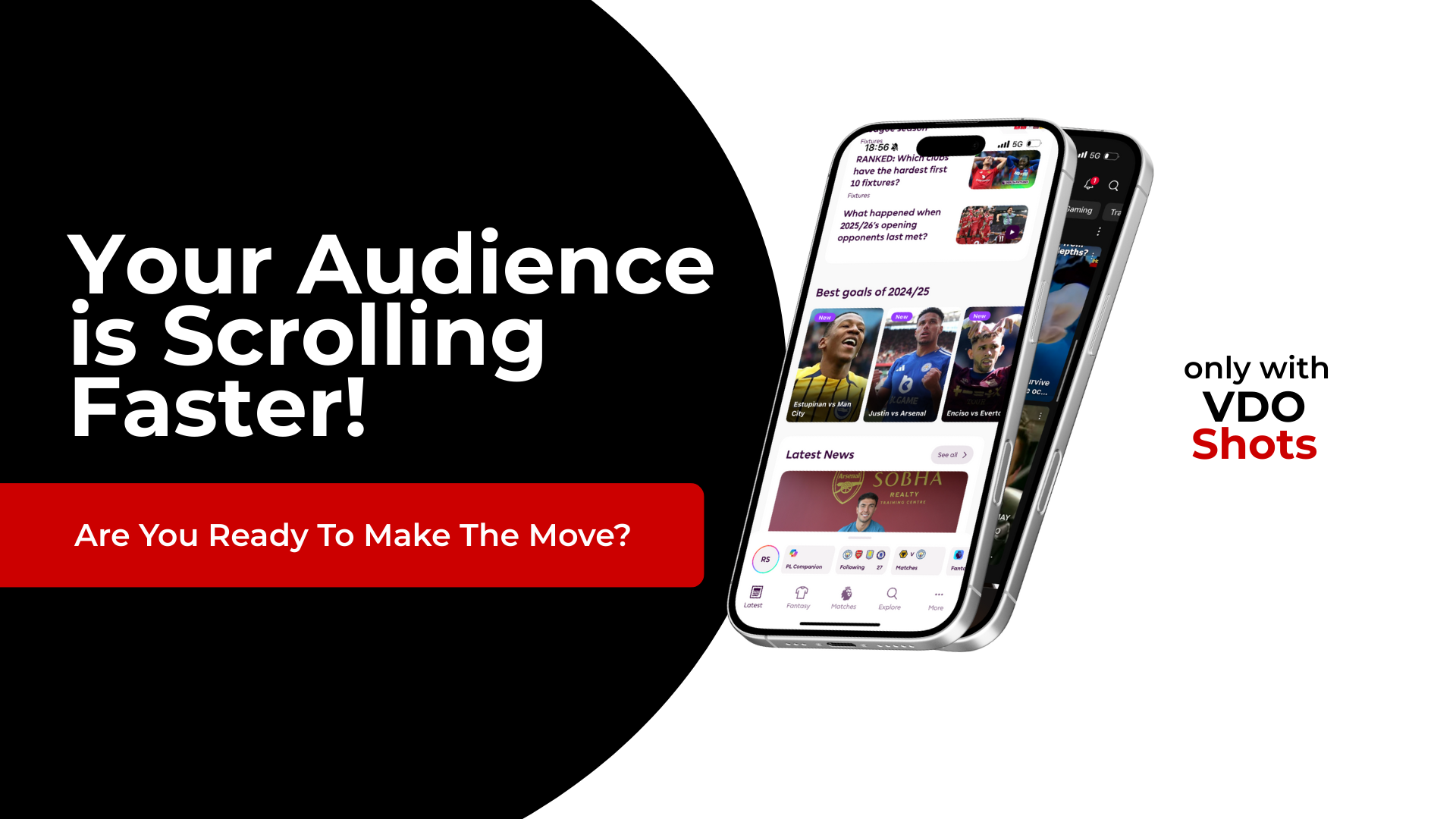What are Leaderboard Ads? Importance in the AdTech World
Reading Time: 5 minutes“You never get a second chance to make the first expression”
– Will Rogers
This saying can not get more real, especially in the popular world of leaderboard ads – the topmost banner ad on a website. Psychology says the human mind is always in a quest, so unless the first impression is captivating the eyeballs will soon wander for their next hunt. This is precisely the reason how most businesses are backed by good marketing strategies. To the least, your first impression always sets up the barometer for the next comparison.
So if you belong especially to the advertising industry you would vouch and acknowledge the need and emphasis on a strong first impression. We are living in a digital era where we are exposed to a plethora of markets to influence our minds but if you want to streamline your customers to your website, there are few basic and vital hacks which will help drive traffic and revenue. To do so, publishers are seen experimenting with different ad layout and sizes. Leaderboard ads are one of those high-revenue yielding solution.
In this blog post, we are going to talk about Leaderboard ads, why it is preferred by publishers, how can you implement these ads and what are some of the best practices which are beneficial for the publishers.
Introduction to Leaderboard Ads
In layman’s terms, Leaderboard Ads have the highest prominence amongst all the other ad formats – thus, it leads. It is most likely located at the top of the website with a standard pixel size of 728 x 90. These banner ads perform extremely well in Google Ad Manager and are also part of IAB standard ads. This means that publishers will face less hassle during the buying and selling process. Since IAB standards are more profitable for the publishers, optimizing these ads will directly increase the revenue for them.
In totality, leaderboard ads cannot be missed by the user because of their placement – which is on the top of the page, thereby, increasing impressions and eventually higher revenue.
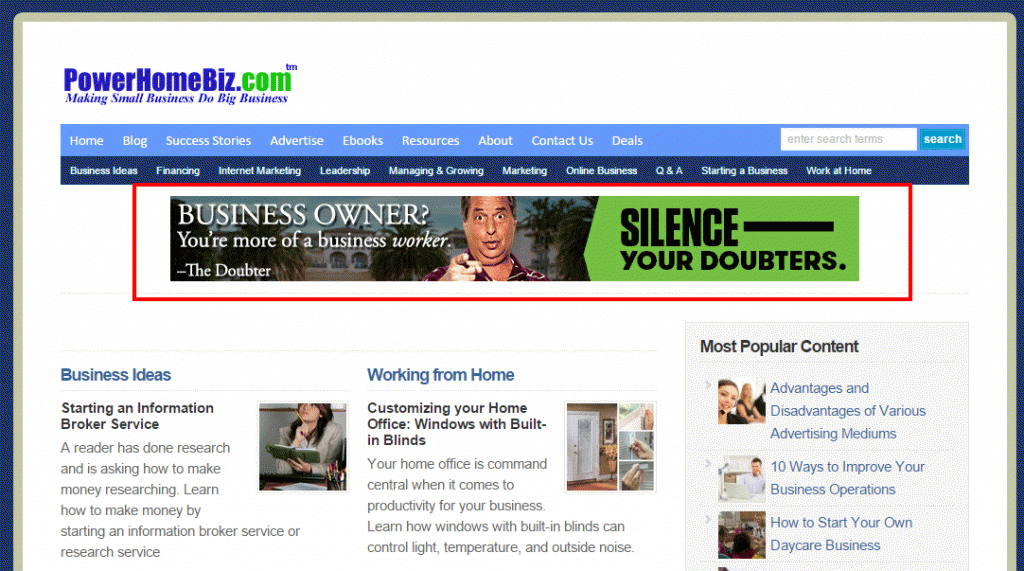
Features of Leaderboards
Leaderboard ads are displayed either through graphic images or scripts. The image banner displays a single ad whereas script banners can hoard up to 20 ads in a single Leaderboard Ad. Leaderboards generally conform to the prior option – graphic image boards. The intention is to increase audience engagement and clicks on the ad.
- Placement Options
These ads can be placed at three different locations in your web page as per functionality and to generate the best revenues/returns – at the top, middle, or bottom of the page. The most recommended and plausible approach to generate maximum engagement rate and in turn, monetization is to place the leaderboard at the top of the fold since it instantly grabs the attention of the user. However, a lot of people believe that placing leaderboard ads at the bottom or between the content can also help deal with banner blindness.
- Versatility
Leaderboard ads are mostly placed on desktops due to huge pixel sizes but are also compatible with tablets. Since these ads support both graphic and script, the creative potential of a publisher is not curbed. Leaderboard ads along with expandable ads (728×270) when thoughtfully placed on a web page can help sustain reader engagement. These expanded leaderboard ads help in showing more details in terms of content which, in turn, results in increased user engagement, click-through rate, and therefore can be beneficial to publishers’ inventory.
Types of Leaderboards
- Super Leaderboards
Super leaderboards commonly known as super banners are a new addition to ad units. These boards are slightly wider in size than the traditional leaderboards and are sized 970 x 90 pixels. Though it is listed as Rising Star in the IAB standard ad, it is still unfamiliar in the ad sector and not as widely used as anticipated. A higher version of Leaderboards, the super banner is yet to create a niche in the AdTech domain.
The use of super leaderboard ads can again help publishers deal with banner blindness, since their relatively less usage will catch the attention of the user.
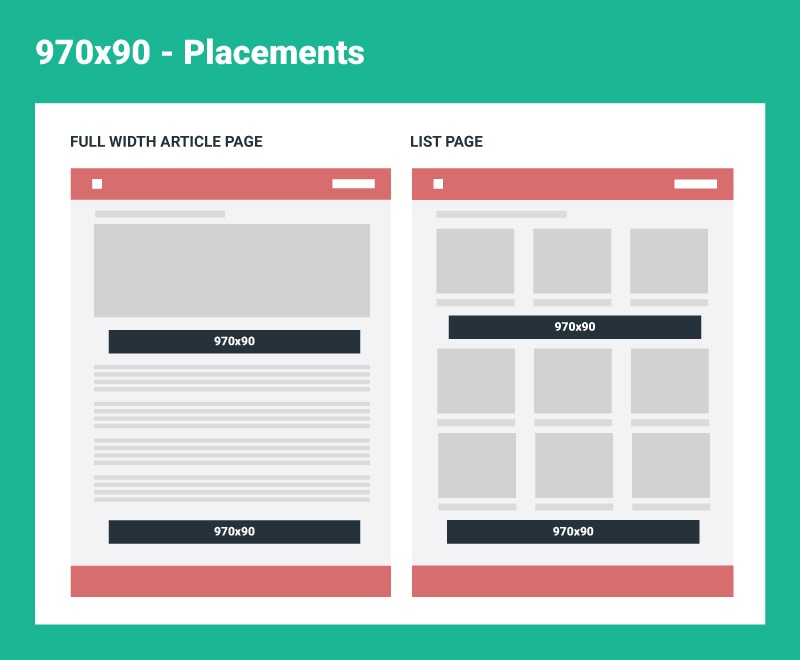
- Mobile Leaderboards
Mobile leaderboards commonly referred to as smartphone leaderboards are an ad unit of pixel size 320 x 50. Counted in one of the top performers for Google AdSense these banners are more commonly used in mobiles. They are the upgraded version next to mobile banners of pixel size 300 x 50.
Considering the display size, Mobile leaderboards might not be your main or largest revenue source but it enhances the chances to monetize through mobile ads. They are cost-effective and if used creatively can be very powerful. These are also IAB standard ads, which makes them powerful. These ads sizes are also among the top-performing Google AdSense’s ads and are listed under ‘anchor ads’ – this means that the ad will stick at the bottom of the page and will remain in view as the user scrolls down the page.

Best Practices
It’s vital to comprehend the strategy and efficiency of few tools like positioning, styling, and relevancy of ads to yield the best results. A few of the best practices for effective utilization of leaderboard ads are listed below:
- Conglomerate the Leaderboard Ads with CRM tool
Monitoring real-time data can help you keep a track of your sales and conclude what’s working for your website and how you can optimize the same.
- Creative integrations with Leaderboard Ads like Gamification
Adding a few simple gamification aspects like rewards, contests can attract more engagement to your sites and influence the revenue.
- Not in sight means not in mind
Experimenting with placement of leaderboard ads is important. For some publishers, the top page placement may work, but for others it may lead to banner blindness. So, seeing what works well for your website is essential and can only be possible if you keep changing the placement of these ads frequently.
- Native Advertising
Publishers should also leverage other ad types when using leaderboard ads – native advertising is the most effective ad type which helps in incremental monetization. These ad sizes serve as breaking points between the content and also increases the aesthetic value of the page.
- Customized Attention
Make sure your leaderboard ad consists of high quality images. Another thing to keep in mind while designing these ads is the placement of the content written in the ad. It should be high on creativity for maximizing the visual quality of the ad.
Conclusion
Leaderboards have created a niche and hold a strong authority in the AdTech industry, helping many publishers to monetize their website effectively. Although the article has listed out many features and working of leaderboards, it is inherent to experiment and identify what works best for your website. Hence experimenting with the ad spaces and efficiently designing the ads will help you sustain in the ever-growing AdTech Industry.
Click Subscribe to be a part of our extended family and receive product updates, company news and other promotional updates.
